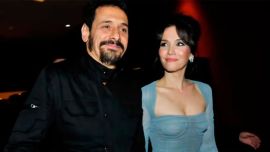First, Anitta conquered Brazil. Now, the singer best known abroad for her smouldering, booty-shaking video “Vai Malandra,” has her eyes set on the rest of the world. It’s been a fast but long ride from the rough Rio de Janeiro neighbourhood of Honorio Gurgel – where Anitta, 25, grew up – to the palm-lined condo she now calls home.
But as Brazil’s biggest pop star explained in an interview, it’s not so much a fairy tale as a story of social media savvy and hard-headed business strategies.
“An artist has to know who she is and to be consistent in building her career,” she said in an interview at her lavish house in Rio’s upmarket western area of Barra da Tijuca.
Born Larissa Machado, she began singing in church with her family and at 17 she was discovered by a producer who saw her in a YouTube video.
Five years later, Anitta found fame in Brazil with “Meiga e Abusada” (“Sweet and Sassy”) and “Show das Poderosas” (“Show of the Powerful”), but her skills at navigating the online markets have been the key, helping catapult her to rapidly growing international stardom. She has 28 million followers on Instagram and her 2015 song “Bang” has been watched 343 million times on YouTube.
“Vai Malandra” (“Go Naughty”), which features Anitta twerking to the sultry rhythm of baile funk-style rap, set social networks on fire and became the first Brazilian song to enter Spotify’s Top 20 Global.
The video is set in a Rio favela and celebrates the often violence-plagued neighbourhoods’ vibrant and sexy street culture, complete with women using electrical tape to create perfect tan lines and sculpted men with peroxide-blond hair and gold chains.
The fact that she didn’t airbrush out the cellulite on her now famously quivering backside only fuelled the social media frenzy – and boosted her credentials as a singer who preaches female empowerment.
WORLD CONQUEST
Brazil is Latin America’s biggest country but Anitta says it’s not big enough for her. “I thought I would get to where I wanted to in Brazil when I was about 30, but by 22, I was already doing great,” she told a conference Harvard hosted for Brazilian business leaders, where she was a surprise guest this April. “I like challenges, so I studied the international market.”
Singing in English and Spanish overcomes the hurdle of having Portuguese as her native language. Although Brazil has a huge market, the rest of the continent speaks Spanish – and that’s before you start looking further afield. While English is “the universal language,” she is also focusing on Spanish-language songs to reach the rest of the Latino world, recording alongside Colombian artists Maluma and J Balvin.
She spent two years visiting clubs in Spain, the United States and Mexico to get a feel for the market and her potential fans, seeing herself as Brazil’s answer to the border-hopping Latin sensations Ricky Martin and Alejandro Sanz.
“I just went ahead and tried to seize the moment,” she said. The strategy works, taking her from the 2016 Rio Olympics opening ceremony to an appearance last year on NBC’s Tonight Show. This summer, she’ll be pushing the Anitta brand with shows at Rock in Rio Lisboa in Portugal, and in Paris and London. Billboard magazine named her number 10 on a list of the most influential artists of social networks last December, while this February, Vogue magazine places her among the world’s most influential people.
DIVA MOMENTS
With its jacuzzi, palm trees and large swimming-pool, Anitta’s three-floor house is the cliché pop star’s abode. But despite that and her large retinue of assistants, she says she keeps herself grounded.
“I may have my diva moments but I don’t want to get to where I’m considered untouchable,” she said.
In person, Anitta barely resembles the pouting, swaggering star of “Vai Malandra.” She is diminutive, neatly dressed in black pants and a yellow sweater, and her hair falls in golden curls, rather than the dark braids of the video. That chameleon-like adaptability, helped by several rounds of plastic surgery, is a big part of her rise.
Her mantra, she says, “is to do things differently. I research the market but only so that I can do something other than follow the trends. I look for things that haven’t been explored yet.”
And she clearly doesn’t lack self-belief.
“All my dreams that I had, I’ve fulfilled,” she said. “I wanted to show people that it’s possible to do everything that they say is impossible.”
by DANIELE BELMIRO AND CECILIA SORGINE























Comments